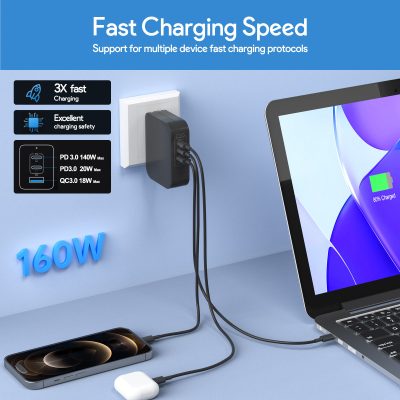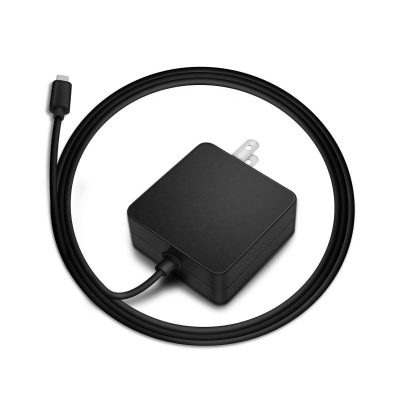USB Chargers: A Comprehensive Buying Guide
Selecting the right USB charger can be a daunting task given the variety of options available. This guide will help you understand the key factors to consider when buying a USB charger to ensure you make the best choice for your needs.
1. Power Output
- Wattage: The power output of a charger is measured in watts (W). Higher wattage means faster charging. For example, a 30W charger will charge a device faster than a 12W charger.
- Device Requirements: Check your device’s power requirements. Smartphones typically need 5-18W, tablets need 10-30W, and laptops can require 30-100W or more.
2. Port Types
- USB-A: The traditional USB port, suitable for most devices but typically supports lower power output.
- USB-C: The newer standard that supports higher power output and faster data transfer. It’s ideal for fast charging and is compatible with a wide range of devices, including laptops.
3. Charging Standards
- Power Delivery (PD): A fast-charging standard that allows for higher power levels, suitable for charging laptops, tablets, and smartphones quickly.
- Quick Charge (QC): Developed by Qualcomm, this standard allows for faster charging on compatible devices. Look for QC 3.0 or higher for the best performance.
4. Number of Ports
- Single Port: Suitable for charging one device at a time. Ideal for personal use.
- Multi-Port: Allows you to charge multiple devices simultaneously. Look for chargers with smart charging technology that distributes power efficiently among all ports.
5. Build Quality and Safety Features
- Durability: Look for chargers made from high-quality materials that can withstand frequent use.
- Safety Features: Important safety features include over-current protection, over-voltage protection, short-circuit protection, and temperature control to prevent overheating.
6. Size and Portability
- Compact Design: If you travel frequently, opt for a compact and lightweight charger that’s easy to carry.
- Foldable Plugs: Chargers with foldable plugs are more travel-friendly and easier to store.
7. Brand Reputation
- Trusted Brands: Choose chargers from reputable brands known for their quality and reliability, such as Anker, Aukey, RAVPower, Belkin, and Apple.
- Certifications: Look for chargers with relevant certifications, such as UL, FCC, or CE, which indicate compliance with safety and quality standards.
8. Price
- Budget: Set a budget that matches your needs. Higher wattage and additional features typically come at a higher price.
- Value: Consider the value for money. Sometimes paying a bit more for a reputable brand or additional features can save you money in the long run by avoiding cheap chargers that may fail or damage your devices.
9. Additional Features
- Detachable Cables: Chargers with detachable cables offer more flexibility and make it easier to replace the cable if it gets damaged.
- LED Indicators: Some chargers have LED indicators to show charging status, which can be a useful feature.
Top Recommendations
Anker PowerPort Atom III 60W
- Pros: High power output, compact design, USB-C PD.
- Cons: Higher price point.
Aukey PA-Y18 30W
- Pros: Affordable, dual ports, PD 3.0.
- Cons: Lower total power output.
RAVPower 65W PD Charger
- Pros: High-speed charging, multiple ports, advanced safety features.
- Cons: Larger size.
Apple 20W USB-C Power Adapter
- Pros: Optimized for Apple devices, compact design.
- Cons: Limited to 20W output.
Belkin Boost↑Charge 18W USB-C Charger
- Pros: High-quality build, includes USB-C to Lightning cable.
- Cons: Higher cost for lower wattage.
Conclusion
When buying a USB charger, consider the power output, port types, charging standards, number of ports, build quality, safety features, size, brand reputation, price, and additional features. By evaluating these factors, you can choose the best USB charger that meets your needs and ensures efficient, safe, and reliable charging for your devices.








